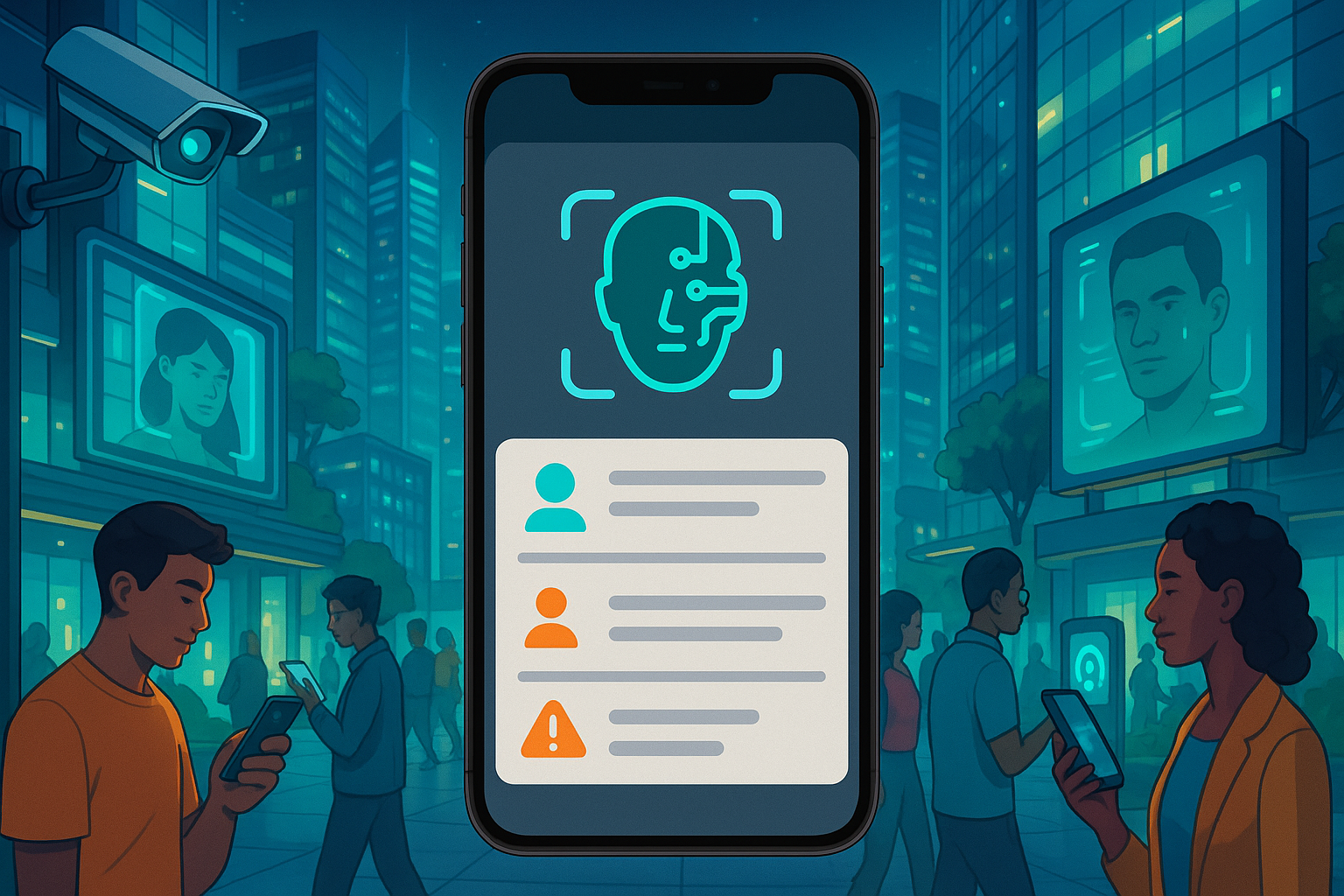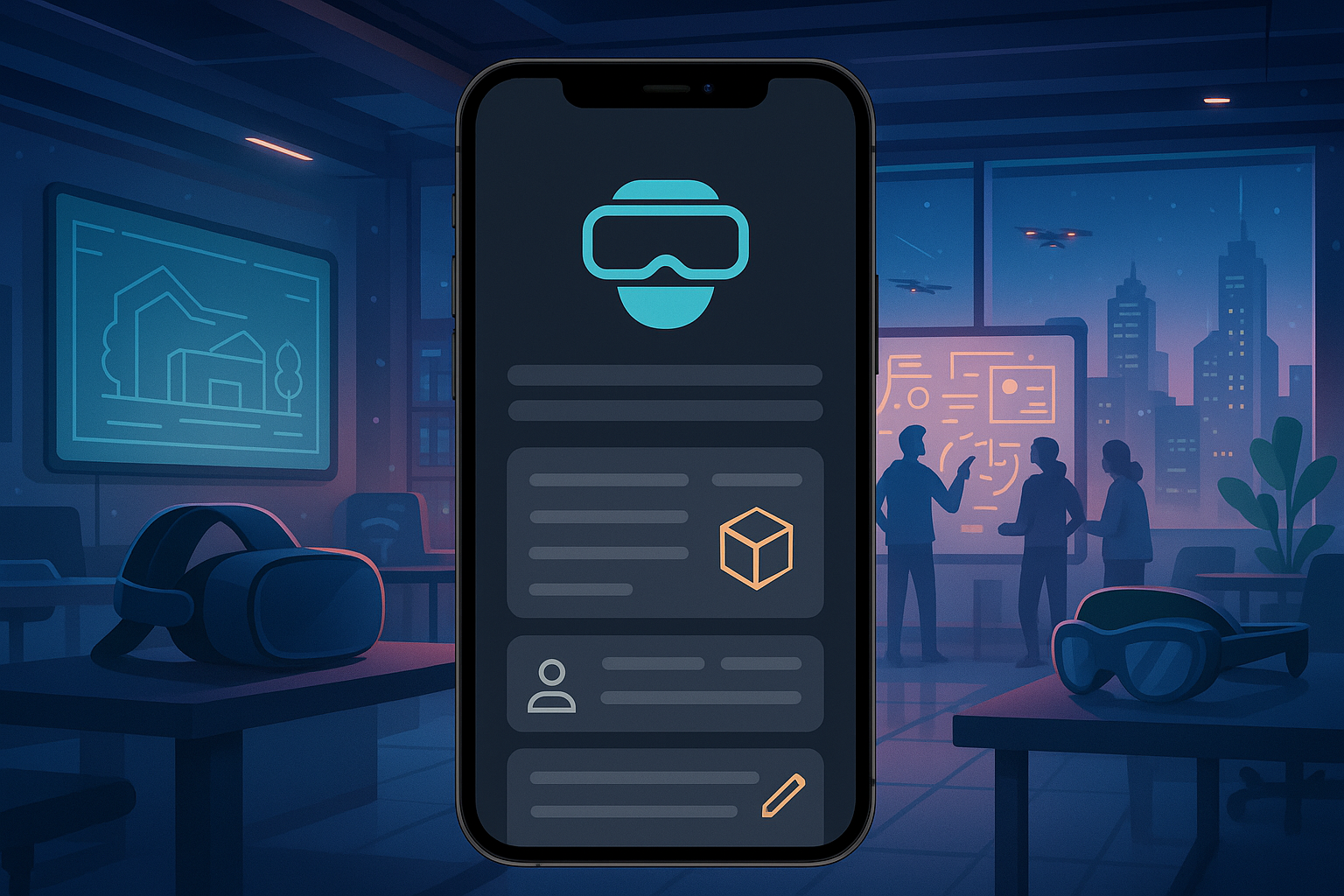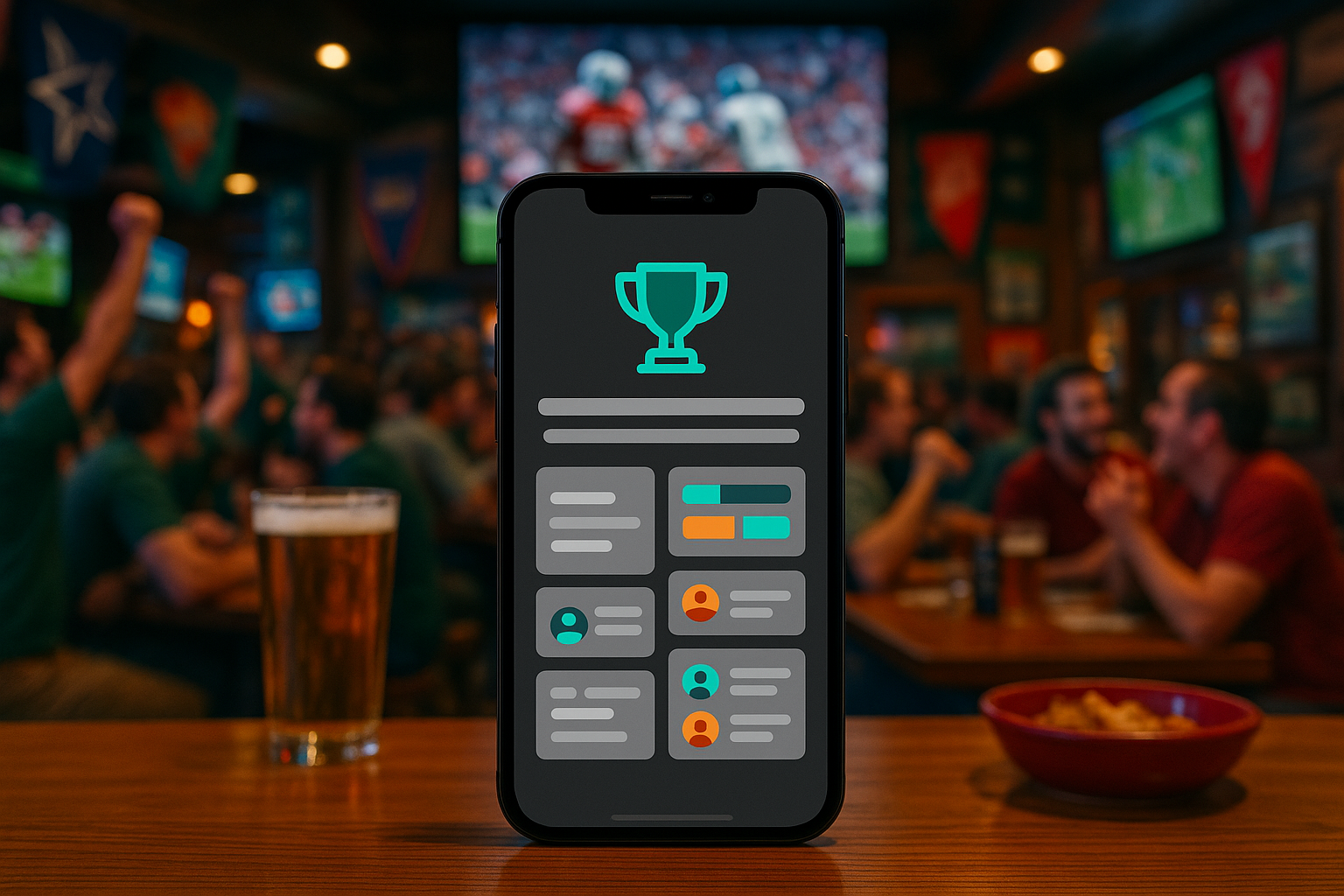Facial recognition technology has moved from the realm of science fiction into our daily lives. It unlocks our phones, tags friends in photos, secures international borders, and enhances retail experiences. The potential for new applications is immense, prompting many businesses to consider developing their own facial recognition app. However, this is no simple task. The journey from concept to a functional, accurate, and secure app is fraught with technical, financial, and logistical challenges that can easily derail an in-house project.
Developing a sophisticated AI-powered application requires a deep well of specialized knowledge, significant resources, and a clear strategic roadmap. This is where partnering with an experienced development agency becomes a critical advantage. At MetaCTO, we specialize in turning complex ideas into market-ready mobile apps. With over 20 years of experience and a track record of launching over 120 successful projects, we provide the AI and mobile development expertise needed to navigate this complex landscape.
This guide will provide a comprehensive overview of facial recognition app development. We will explore what these apps are, detail the significant difficulties of building them in-house, outline the various types of applications, provide a realistic cost breakdown, and introduce the leading companies in the space. Our goal is to equip you with the knowledge to make informed decisions and show you how a partnership with MetaCTO can transform your vision into a successful reality.
What is a Face Recognition App?
At its core, a facial recognition system is a technology capable of identifying or verifying a person from a digital image or a video frame. The system works by matching the facial features in the image against a database of known faces. Categorized as a form of biometrics, this technology leverages the unique mathematical patterns of each person’s face to perform its function.
The underlying process, while complex, can be broken down into a few key steps. First, the system detects a face within an image. Then, it analyzes the geometry of the face. Some algorithms identify key landmarks, or features, such as the relative position, size, and shape of the eyes, nose, cheekbones, and jaw. Other, more modern algorithms normalize a gallery of face images and compress the data, saving only the information that is useful for distinguishing one face from another. This data is converted into a unique numerical code or “faceprint.” Finally, this faceprint is compared to a database of other faceprints to find a match.
Recognition algorithms are generally divided into two main approaches:
- Geometric: This approach focuses on distinguishing features and their spatial relationships.
- Photo-metric: This statistical approach distills an image into values and compares these values against templates to eliminate variances like lighting and expression.
These approaches can be further classified into two broad categories:
- Holistic Models: These algorithms attempt to recognize the face in its entirety. A popular example is the Principal Component Analysis (PCA) using eigenfaces, a method pioneered by Matthew Turk and Alex Pentland in the early 1990s.
- Feature-based Models: These models subdivide the face into components according to features (eyes, nose, mouth) and analyze each part, as well as its location relative to other features.
The field has evolved significantly from its early days. While early systems required humans to manually plot facial coordinates, modern systems are fully automated and increasingly leverage advanced machine learning and deep learning techniques. Deep learning models, like the one used in Facebook’s DeepFace system, employ complex neural networks with millions of connection weights, trained on vast datasets of images to achieve remarkable accuracy. This complexity underscores the specialized expertise required to build and maintain such a system.
Reasons That It Is Difficult to Develop a Face Recognition App In-House
Embarking on the development of a facial recognition app is a significant undertaking. While the prospect of creating a proprietary system is appealing, the reality is that in-house development presents formidable challenges that can quickly exhaust resources and derail timelines. These difficulties span costs, technical complexity, and the ever-evolving nature of the technology itself.
The Prohibitive Costs of Development
Building a facial recognition system from the ground up is an expensive endeavor. The costs extend far beyond developer salaries and can be broken down into several key areas.
- Talent Costs: The most significant hurdle is often the cost of talent. AI and machine learning engineers with expertise in computer vision are in high demand and command premium salaries. Assembling an in-house team with the necessary skills to develop, train, and deploy a sophisticated facial recognition model is a major financial commitment.
- Data Collection Costs: Machine learning models are only as good as the data they are trained on. Building a large, diverse, and accurately labeled dataset of faces is a massive and costly undertaking. This data must account for variations in lighting, pose, expression, age, ethnicity, and potential obstructions like glasses or hats to ensure the model is robust and unbiased.
- Training Costs: Training deep learning models requires immense computational power. This translates to substantial costs for high-end GPUs, cloud computing services (like AWS or Google Cloud), and extensive electricity consumption. The process is iterative, meaning these costs are not a one-time expense but a recurring part of refining and improving the model.
- Other Development Costs: Beyond the core AI components, there are costs associated with building the application itself, creating user interfaces, setting up secure server infrastructure, ensuring legal compliance with data privacy laws like GDPR, and continuous maintenance and updates.
The Deep Technical Complexity
The science behind facial recognition is sophisticated and has been evolving for over sixty years. A successful implementation requires more than just a surface-level understanding of AI.
The history of facial recognition is a testament to its complexity. It began in the 1960s with “man-machine” systems where humans had to manually input feature coordinates. Progress continued with automated systems in the 1970s and major government-funded research like the FERET program in the 1990s. This research led to foundational algorithms like Eigenface (PCA), which was later improved upon by Fisherfaces (LDA).
Modern systems have grown even more complex, incorporating a variety of advanced techniques:
- Advanced Algorithms: Beyond PCA and LDA, popular algorithms include Elastic Bunch Graph Matching, the hidden Markov model, and neuronal motivated dynamic link matching. Each requires specialized knowledge to implement and optimize.
- 3D and Thermal Recognition: To overcome the limitations of 2D images, developers now use 3D sensors to capture the shape of a face or thermal cameras that can work in low-light conditions and are unaffected by makeup or accessories. The U.S. Army Research Laboratory developed a method just to match thermal images to conventional ones.
- Handling Imperfect Data: Real-world images are rarely perfect. Techniques like face hallucination use machine learning to enhance low-resolution or disguised images before they are processed.
- Deep Learning: The most accurate modern systems, like Facebook’s DeepFace or the Viola-Jones algorithm, rely on deep neural networks. Building and training these requires a profound understanding of neural network architecture, activation functions, and optimization techniques.
The “Arms Race” Against Anti-Recognition
As facial recognition becomes more widespread, so do efforts to circumvent it. This has created an ongoing “arms race” between developers and privacy advocates, meaning any in-house system must be constantly updated to remain effective.
Anti-facial recognition techniques include:
- Adversarial Patterns: Specially designed makeup patterns, haircuts (like computer vision dazzle), or clothing prints can confuse algorithms into not detecting a face at all.
- Obfuscation Tools: Software like the University of Chicago’s Fawkes algorithm makes subtle, human-imperceptible changes to photos that “cloak” them, causing facial recognition models to misidentify the person.
- Physical Barriers: While facial masks worn during the pandemic initially posed a major challenge—a 2020 NIST study found failure rates of up to 50%—algorithms are rapidly adapting. Even so, new physical methods, like the Japanese ‘privacy visor’ that uses infrared light, continue to emerge.
Staying ahead in this arms race requires a dedicated research and development effort, something that is often beyond the scope of a typical in-house IT department.
The MetaCTO Advantage
Navigating these challenges requires a partner with proven experience and a deep technical bench. At MetaCTO, we specialize in building complex, AI-driven applications. Our team of experts understands the nuances of computer vision and has a track record of delivering sophisticated solutions, such as the G-Sight training app, which uses cutting-edge computer vision AI. By partnering with us, you bypass the immense costs and risks of building an in-house team. Our AI Development services provide a clear path from concept to a market-ready product, allowing you to focus on your core business while we handle the intricate technical challenges.
Different Types of Face Recognition Apps
The applications for facial recognition are incredibly diverse, spanning numerous industries and use cases. These apps can be broadly categorized based on their primary function, from enhancing security to personalizing consumer experiences.
Security and Surveillance
This is one of the earliest and most widespread uses of facial recognition technology. Governments and law enforcement agencies around the world use it to identify individuals and maintain public safety.
- Law Enforcement: The FBI’s Next Generation Identification program includes facial recognition capabilities, pulling from both criminal and civil databases. Police forces in cities like San Diego, Los Angeles, and Baltimore have used the technology to identify suspects from photos and videos. China’s “Skynet” project is a massive nationwide CCTV surveillance system with millions of cameras, many equipped with real-time facial recognition.
- Border Control: To streamline and secure international travel, countries have deployed automated gates. The SmartGate system in Australia and New Zealand and the Primary Inspection Kiosk program in Canadian airports use facial recognition to compare a traveler’s face to the photo on their ePassport. U.S. Customs and Border Protection uses similar “biometric face scanners” at major airports.
- Public and Event Security: The technology is used to screen crowds for potential threats. Police used it at Super Bowl XXXV in 2001, and more recently, Taylor Swift’s team used a system embedded in a kiosk to scan concert-goers for known stalkers.
Authentication and Access Control
Facial recognition offers a convenient and secure way to verify a user’s identity, eliminating the need for passwords or physical keys.
- Device Unlocking: This is perhaps the most common use case for consumers. Android introduced it with “Ice Cream Sandwich,” and Apple revolutionized it with Face ID on the iPhone X. Face ID is particularly sophisticated, using a “Romeo” module to project over 30,000 infrared dots onto a user’s face and a “Juliet” module to read the resulting pattern, which is then processed securely on the device.
- Digital Payments: Apple Pay leverages Face ID to authenticate transactions, providing a seamless and secure payment experience.
- Physical Access: Companies use facial recognition to control access to office buildings. In the entertainment world, Manchester City football club has piloted a system for a “super-fast lane” to admit supporters into its stadium.
Commercial and Retail
Retailers are adopting facial recognition to improve customer experience, enhance security, and gather valuable business analytics.
- Customer Experience: As far back as 2012, firms like 3VR offered retailers systems that could facilitate personalized greetings by employees when a known customer entered the store.
- Loss Prevention: Major retailers, including The Home Depot, Walmart, and Rite Aid in the U.S., and Kmart and Bunnings in Australia, have deployed facial recognition to identify known shoplifters and prevent theft.
- Analytics: The technology can be used to analyze customer behavior, such as measuring dwell times in certain areas of a store or queue lengths at checkout, providing data to decrease wait times and improve store layout.
Social Media and Entertainment
Social media platforms and entertainment companies use facial recognition to organize content and create engaging interactive experiences.
- Photo Tagging and Organization: Many photo management applications use facial recognition to automatically identify people in photos, making it easy to search for pictures of a specific person or suggesting photos to share with contacts.
- Augmented Reality (AR) Filters: Apps like Snapchat and Looksery use face detection to identify facial features and then layer a 3D mesh mask over the face, creating the popular AR filters that transform a user’s appearance in real-time.
- Emotion Recognition: An emerging field is the use of facial recognition to detect emotions. Companies like Affectiva offer products that can analyze facial expressions to gauge emotional responses, with applications in market research, driver safety systems, and more.
Healthcare
The medical field is finding innovative ways to use facial recognition to improve diagnostics and patient care.
- Disease Diagnosis: Researchers are using machine learning to analyze facial dimensions and identify features associated with certain genetic abnormalities. The AI company FDNA claims its database can help detect 1,500 different diseases through facial analysis.
- Patient Verification: To prevent errors, some hospitals use the technology to verify a patient’s identity before surgical procedures.
- Public Health: During the COVID-19 pandemic, India planned to use facial recognition technology linked to its Aadhaar ID system to authenticate the identity of people seeking vaccines.
Cost Estimate for Developing a Face Recognition App
Determining the exact cost of a facial recognition app is challenging, as it depends heavily on the project’s complexity, the chosen platform, feature set, and the geographic location of the development team. However, we can provide a detailed breakdown of the expected cost ranges based on industry data.
Cost Breakdown by Development Stage
The app development lifecycle involves several distinct stages, each with its own associated costs. Building a high-quality app requires investment across all these areas.
| Development Stage | Estimated Cost |
|---|---|
| App Design & Branding | $5,000 – $20,000 |
| Platform Development (Core App) | $50,000 – $120,000 |
| Feature Integration (Advanced AI) | $10,000 – $100,000+ |
| API Integration | $17,000 – $25,000 |
| Compliance & Legal | $10,000 – $20,000 |
| Testing & Quality Assurance | $10,000 – $20,000 |
| Deployment & Launch | $2,000 – $10,000 |
| Monthly Maintenance & Updates | $2,000 – $10,000 |
Cost by Project Complexity
The scope and sophistication of your app are the biggest cost drivers.
- Low Complexity App ($20,000 – $50,000): A basic app might integrate an existing facial recognition API for a simple function like photo tagging within a small, contained user base. It would have basic features and a simple UI.
- Medium Complexity App ($50,000 – $120,000): This could be a security app for a small business that includes real-time alerts and a more robust database, or a consumer app with several advanced features. This is a common range for an initial product or MVP.
- High Complexity App ($120,000 – $150,000+): A high-complexity app involves developing custom facial recognition algorithms, integrating with multiple systems, supporting live video analysis, and ensuring high levels of security and compliance. This category includes large-scale enterprise or government-level applications.
Cost by Platform Choice
Where your app will run also significantly impacts the budget.
- Web Solutions: A web-based facial recognition tool is often the most cost-effective, with development costs typically ranging from $15,000 to $50,000.
- Cross-Platform App: Building an app that works on both iOS and Android using a single codebase (e.g., React Native, Flutter) is more efficient than native development, costing between $25,000 and $60,000.
- Native App (iOS or Android): Developing separate, native apps for each platform provides the best performance and user experience but is the most expensive option, ranging from $50,000 to $100,000 per platform.
Cost by Development Team Location
Developer hourly rates vary dramatically around the world. While lower rates can be tempting, it’s crucial to balance cost with expertise, communication, and quality.
| Region | Average Hourly Rate |
|---|---|
| USA | $100 – $150 |
| Western Europe | $80 – $90 |
| Eastern Europe | $50 – $55 |
| UAE | $60 – $65 |
| India | $30 – $50 |
As a US-based firm, we at MetaCTO operate within the top tier of expertise and quality. We provide exceptional value by delivering a clear strategy, efficient development processes, and a product that is built to scale. Our Rapid MVP Development service is designed to get your product to market in 90 days, validating your idea and managing costs effectively without sacrificing quality.
Top Face Recognition App Development Companies
Choosing the right development partner is the single most important decision you’ll make when building a facial recognition app. You need a team with proven expertise in AI, computer vision, and mobile app development. Here are some of the top companies in the field.
1. MetaCTO
As a premier US-based AI and mobile app development agency, we put ourselves at the top of this list because we deliver comprehensive, end-to-end solutions that turn ambitious ideas into successful, market-ready products. With over two decades of experience and a portfolio of over 120 launched apps, our expertise is both deep and broad.
What sets us apart is our holistic approach to app development. We don’t just write code; we partner with you through every stage of the journey:
- Validate: We help you quickly turn your idea into a Minimum Viable Product (MVP) to test the market, gather user feedback, and attract investors.
- Build: Our expert team handles the entire process—from UI/UX design to backend engineering and launch—ensuring a seamless and robust final product.
- Grow: Post-launch, we focus on user acquisition and retention, using analytics and A/B testing to build a loyal customer base.
- Monetize: We work with you to implement effective monetization strategies, from subscriptions to in-app purchases, to ensure your app is profitable.
- Evolve: As your business scales, we ensure your app evolves with it, incorporating the latest technology to stay competitive.
Our success in the computer vision space is demonstrated by our work on the G-Sight app, a dry-fire training system that uses cutting-edge computer vision AI to provide real-time feedback to users. This project highlights our ability to tackle complex AI challenges and deliver a polished, high-performing mobile application. When you partner with MetaCTO, you’re not just hiring developers; you’re gaining a strategic technical partner dedicated to your success.
2. Waverley Software
Waverley Software is recognized as one of the best AI app development companies. They offer custom mobile app development and have deep expertise in AI and Machine Learning. The company specializes in creating data-driven products, including advanced image processing tools, making them a strong contender for facial recognition projects.
3. MobiDev
MobiDev is a custom software development company with over 14 years in the business and a team of more than 450 employees. They specialize in bringing AI to life through computer vision and are highly proficient in AI for mobile applications. Their service lines are extensive, covering AI, AR, IoT, and mobile and web development, and they employ a variety of technologies, including data science, machine learning, and computer vision.
Conclusion
The world of facial recognition technology is complex, powerful, and rapidly expanding. As we’ve explored, developing an application in this space involves far more than just writing code. It requires a deep understanding of sophisticated algorithms, access to vast and expensive resources for data and training, and a strategy to keep pace with an ever-evolving technological landscape.
In this guide, we have covered the core concepts of what a facial recognition app is, detailed the significant challenges of cost and complexity that make in-house development so difficult, showcased the diverse array of application types across industries, and provided a realistic breakdown of the potential costs involved.
Attempting to navigate this landscape alone is a high-risk endeavor. The financial investment is substantial, the technical hurdles are steep, and the competition is fierce. This is why partnering with a seasoned expert is not a luxury, but a necessity for success.
At MetaCTO, we have the experience, the expert team, and the proven process to guide your project from a bold idea to a successful launch and beyond. We transform the daunting challenges of AI development into a clear, manageable, and efficient path to a market-leading product.
Ready to turn your vision for a face recognition app into reality? Don’t let the complexities hold you back. Talk with an expert at MetaCTO today to discuss your project and get a clear roadmap for success.






